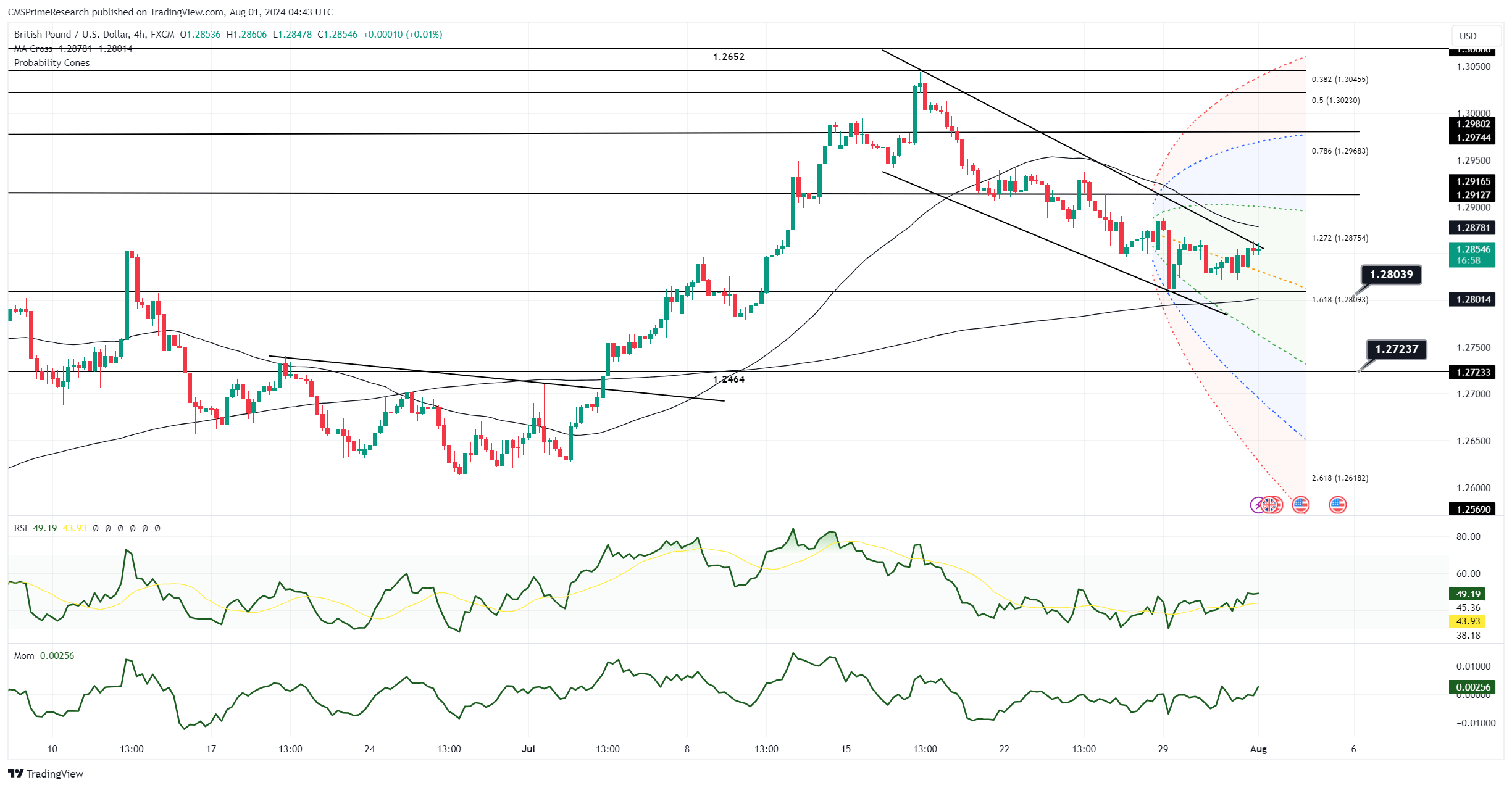GBP/USD Holds Firm Post-Fed as Focus Shifts to BoE Decision

GBP/USD drifted higher following the Federal Reserve’s decision, trading up 0.14% at 1.2852, within Wednesday’s range of 1.2860-1.2820. The Fed held rates as expected, causing U.S. short-term interest rate futures to dip slightly, with odds for a third rate cut in 2024 decreasing. The Fed acknowledged progress towards the 2% inflation target but remained vigilant about potential risks. Despite a dip in GBP/JPY, Sterling remained steady ahead of both the Fed and Bank of England (BoE) rate decisions.
The market’s attention now shifts to the BoE’s rate decision on Thursday. Interest rate probability (IRPR) markets currently price in a 66% chance of a 25 basis point cut. Despite this, short-term interest rate expectations suggest GBP/USD holds a slight advantage, which is positive for the pound. However, much depends on the BoE’s guidance; if dovish tones increase, GBP longs might exit their positions.
Support levels for GBP/USD include the 50% Fibonacci retracement of 1.2610-1.3040 at 1.2828, the 30-day moving average (DMA) at 1.2810, and the July 9 low at 1.2778. Resistance levels are identified at the high of 1.2862, the 200-hour moving average (HMA) at 1.2882, and the high of 1.2912.
In early North American trading, GBP/USD held steady near 1.2840, unaffected by post-BoJ volatility in GBP/JPY as traders awaited the Fed’s decision and the BoE’s rate decision on Thursday. The degree of dovishness from both central banks will likely influence sterling’s direction. With the Fed expected to hold rates steady, traders will scrutinize comments by Chair Jerome Powell for any support of market bets on up to three U.S. rate cuts this year.
Rate markets currently see a 65% chance of a BoE cut on Thursday, with rising expectations of easing weighing on the pound recently. However, support appears firm near 1.2822, the 50% Fibonacci retracement level of 1.2610-1.3042, just above the significant support at 1.28. Despite the BoE’s expected early start to accommodation, short-term rate futures are pricing a slightly less dovish UK rate path compared to the U.S., which is likely to keep the pound relatively firm against the dollar, barring an overly dovish BoE stance.






